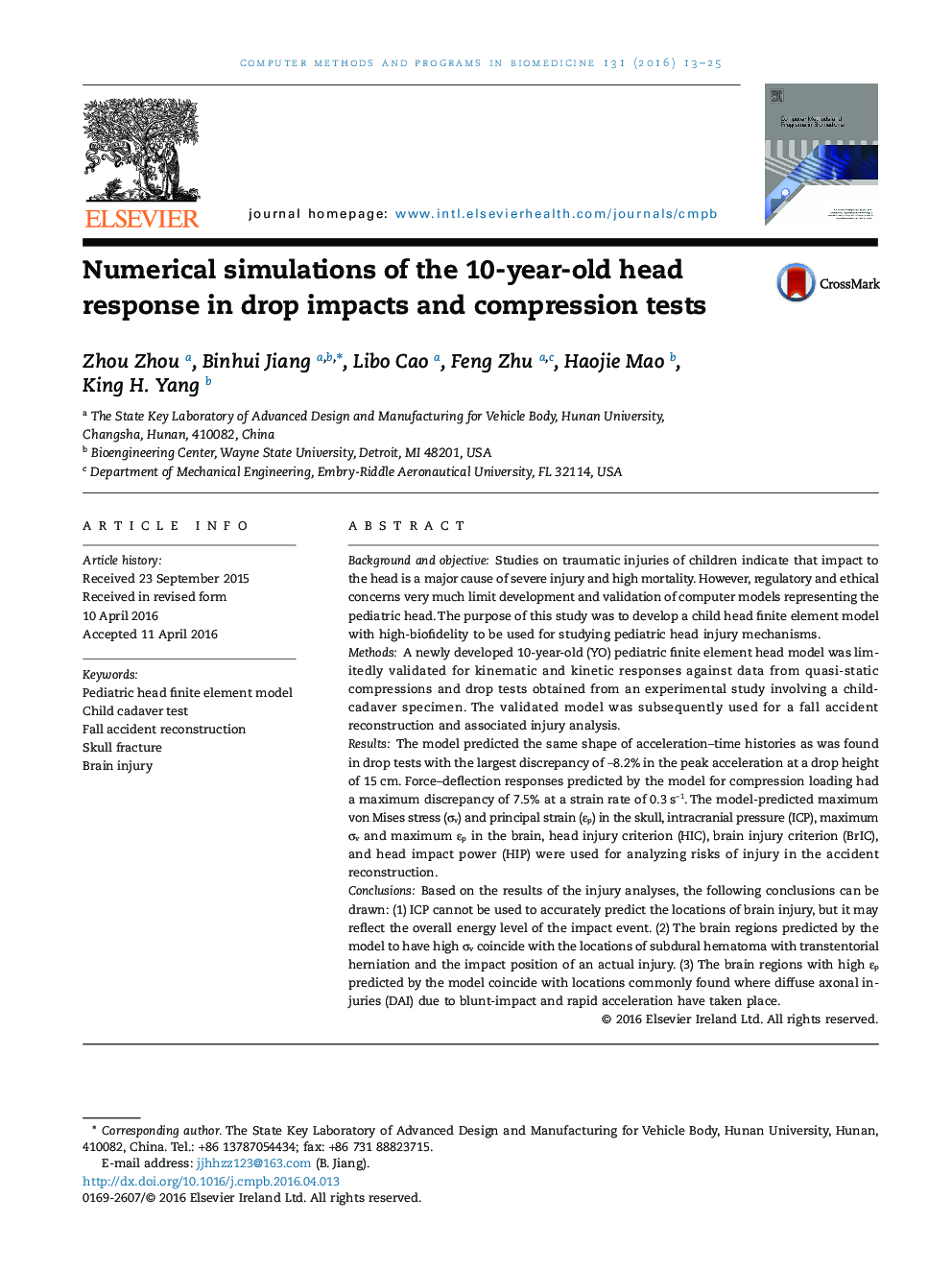| کد مقاله | کد نشریه | سال انتشار | مقاله انگلیسی | نسخه تمام متن |
|---|---|---|---|---|
| 469060 | 698284 | 2016 | 13 صفحه PDF | دانلود رایگان |
• A computational study of the 10 YO child head response in drop and compression were conducted.
• The biomechanical response and head injury criteria were used for analyzing the injuries.
• ICP may reflect the overall energy level of the impact event and degree of motion of the skull/brain.
• The σv in the brain can basically capture the location of a subdural hematoma and impact position.
• The locations of high εp are consistent with many clinical studies where the locations of DAI took place.
Background and objectiveStudies on traumatic injuries of children indicate that impact to the head is a major cause of severe injury and high mortality. However, regulatory and ethical concerns very much limit development and validation of computer models representing the pediatric head. The purpose of this study was to develop a child head finite element model with high-biofidelity to be used for studying pediatric head injury mechanisms.MethodsA newly developed 10-year-old (YO) pediatric finite element head model was limitedly validated for kinematic and kinetic responses against data from quasi-static compressions and drop tests obtained from an experimental study involving a child-cadaver specimen. The validated model was subsequently used for a fall accident reconstruction and associated injury analysis.ResultsThe model predicted the same shape of acceleration–time histories as was found in drop tests with the largest discrepancy of −8.2% in the peak acceleration at a drop height of 15 cm. Force–deflection responses predicted by the model for compression loading had a maximum discrepancy of 7.5% at a strain rate of 0.3 s−1. The model-predicted maximum von Mises stress (σv) and principal strain (εp) in the skull, intracranial pressure (ICP), maximum σv and maximum εp in the brain, head injury criterion (HIC), brain injury criterion (BrIC), and head impact power (HIP) were used for analyzing risks of injury in the accident reconstruction.ConclusionsBased on the results of the injury analyses, the following conclusions can be drawn: (1) ICP cannot be used to accurately predict the locations of brain injury, but it may reflect the overall energy level of the impact event. (2) The brain regions predicted by the model to have high σv coincide with the locations of subdural hematoma with transtentorial herniation and the impact position of an actual injury. (3) The brain regions with high εp predicted by the model coincide with locations commonly found where diffuse axonal injuries (DAI) due to blunt-impact and rapid acceleration have taken place.
Journal: Computer Methods and Programs in Biomedicine - Volume 131, July 2016, Pages 13–25
